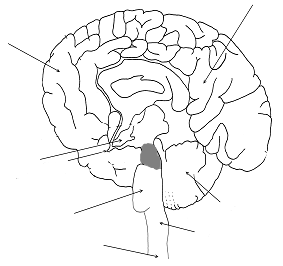 Neuropsychology is able to investigate the human brain in a variety of ways. One is to scan the brain using technology such as an MRI machine or CAT scanning (using low level x-rays).
Neuropsychology is able to investigate the human brain in a variety of ways. One is to scan the brain using technology such as an MRI machine or CAT scanning (using low level x-rays).
There are a whole range of other tests that have been developed as well.
Neuropsychologists will also use psychological assessments to determine brain functioning. Consider some of the tests used.
Clinical Dementia Rating
The CDR is a numerical scale that determines how severe the symptoms of dementia are. From this, the neuropsychologist can determine at what “stage” the person is. The psychologist will assess the person’s cognitive and functioning performance in six areas:
- Memory
- Problem solving and judgement
- Orientation
- Home and hobbies
- Community affairs
- Personal care
The person will be given a score in each of these, ranging from 0 to 3.
Rating Symptom
0 None
0.5 Very mild
1 Mild
2 Moderate
3 severe
From this, CDR is able to discern very mild impairments, but a criticism of the assessment is that it takes a great deal of time to administer and relies on subjective assessment. It also has a relative inability to capture changes over time.
Glasgow Coma Scale/Score
The GCS is a neurological scale, which tries to give an objective way of recording the conscious state of a person initially and as an ongoing assessment. The patient will be assessed against various criteria on a scale and the points will give a patient a score between 3 (deep unconsciousness) and 14 or 15 (14 being the original scale, 15 the revised scale). It is used to assess the level of consciousness after a head injury. The GCS is used in first aid, emergency medical services, doctors and so on, who are supporting patients after injuries. It can also be used to monitor and assess chronic patients, for example, in intensive care.
The Benton Visual Retention Test
The Benton Test is used from 8 years of age to adults and measure visual memory and visual perception. It can also be used to identify learning disabilities. A child is shown 10 designs, one at a time and asked to reproduce each one as exactly as possible from memory. The results are then scored by form, pattern, shape and arrangement.
Continuous Performance Test/Task
The CPT is a psychological test that measures a person’s selective and sustained attention. Sustained attention is the ability to maintain a consistent focus on a continuous activity or stimuli. It is associated with impulsivity. Selective attention is the ability to focus on a relevant stimulus and ignore competing stimuli.
This is associated with distractibility. There are a range of different CPTs and are often used as part of a battery of tests to determine a person’s capacity to sort and manage information (their executive functioning). It can be used to consider a diagnosis of attention deficit disorder.
The Stroop Test
The Stroop Effect is the demonstration of the interference in a reaction time in a test. For example, if a word is printed in green, but says red.
So the colour is different to the semantic meaning of the word. The delay that occurs in the processing of the word leads to slower reaction times and an increase in mistakes.
Wechsler Adult Intelligence Scale
The WAIS is a general intelligence test (IQ). It breaks down the IQ into 14 sub tests consisting of seven verbal sub tests and seven performance sub tests. These tests then give three scores:
- Verbal IQ
- Performance IQ
- A composite, single full-scale IQ score, based on the combined scores.
The Bender Visual Motor Gestalt Test/Bender-Gestalt Test
This is a psychological test developed by Lauretta Bender, a child neuropsychiatrist. The test evaluates visual motor maturity and is used to screen for developmental disorders or assess brain damage or neurological function. The subject is shown nine figures, each on a separate card. They are asked to copy them onto a blank piece of paper. They are then scored for accuracy and other characteristics. This is usually among one of the top five tests used by clinical psychologists.It measures perceptual motor development, perceptual motor skills and indicates neurological intactness. It can be used as a personality test and test of emotional problems. It can also be used to assess for brain damage.